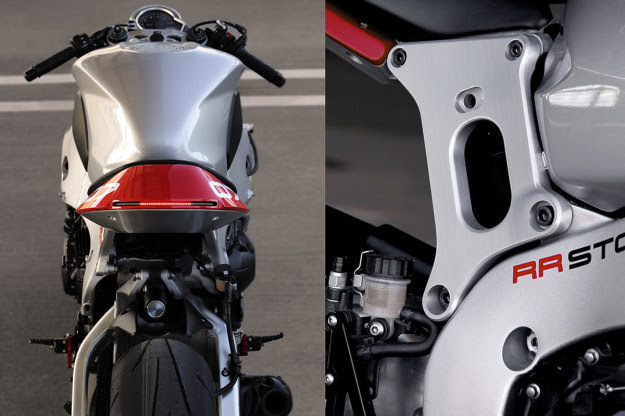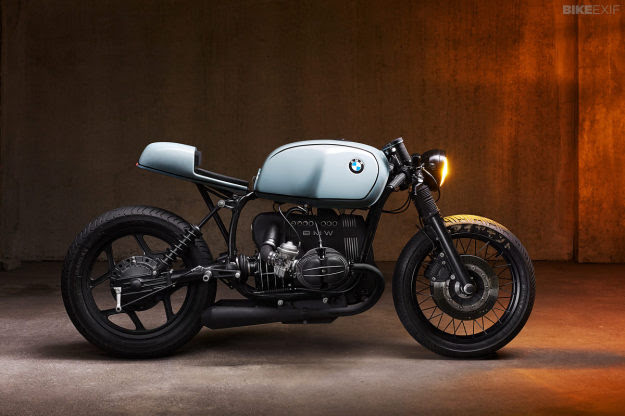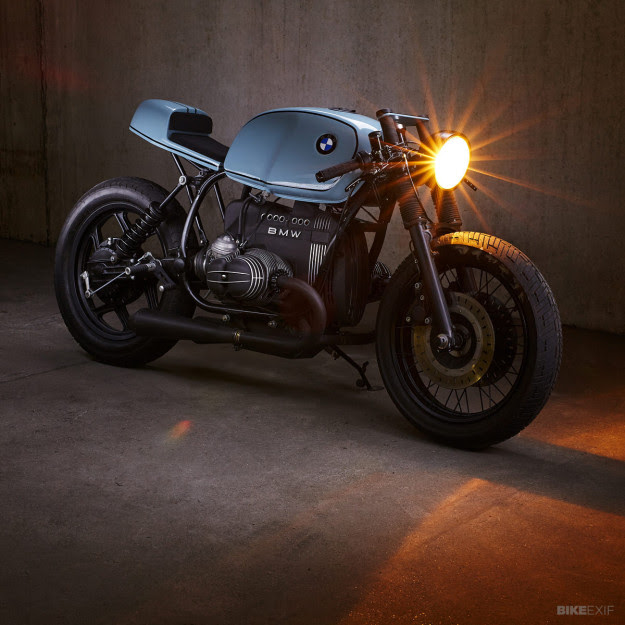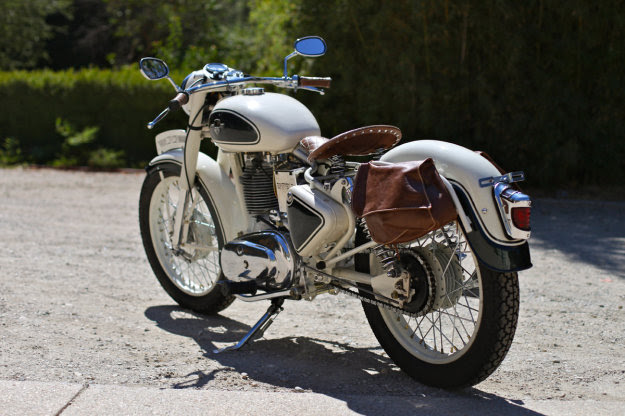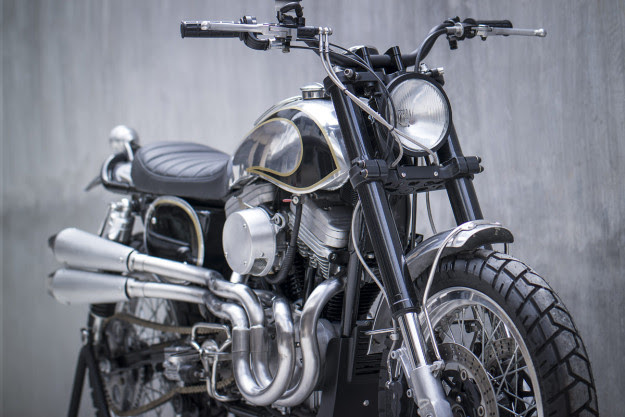
It looks like 2015 is going to be the Year Of The Scrambler. It’s fast becoming the dominant genre on the new wave custom scene, and manufacturers are getting into the act too.
As everyone knows, Ducati has joined Triumph in offering a factory scrambler—and Moto Guzzi has just released a kit that converts the popular V7 into a machine capable of light off-road excursions.

Milwaukee is unlikely to join the party, but that hasn’t stopped inventive custom builders from doing the dirty on Sportsters. The latest is Benjie Flipprboi of BCR, with this heavily modified 1999 Harley 883 called ‘American Scrambler.’
“For
years we had an old 883 in the shop,” says Benjie, who works out of
Edison, New Jersey. “It was a small, beat-up bike with a chromed-out
engine and mismatched wheels. For a long time, we didn’t know what to do
with it.”

Benjie considered turning the 883 into a bobber or a cafe racer. “But we build bikes to stand out and be ridden hard. So we decided to turn the old cruiser into a bike that could be ridden everywhere.” And here we have it: the ready-for-adventure ‘American Scrambler.’
The
first step was to get rid of the cruiser ergonomics—the high front end
and low seat. On went a set of late ‘90s Suzuki GSX1000 forks to lower
the front. “We kept the Harley front hub but machined a new front axle
and an adapter to accommodate the GSX’s double disc brakes,” says
Benjie.

To prop up the rear, Benjie used longer shocks (and raised the mounts by an inch). Then he installed lightweight aluminum Borrani wheels with raised-center ‘dirt catcher’ rims and fitted Shinko 705 Trail Master dual-purpose tires.
Next
step was to figure out the tank. Typical scrambler-style tanks wouldn’t
fit, due to the shape of the Harley top-end. So Benjie fabricated a
tank that follows the curve of the cylinder heads, adding a stainless
steel rack and positioning a Monza gas cap off-center. Aside from a
black flame graphic, the finish is bare polished aluminum finish.
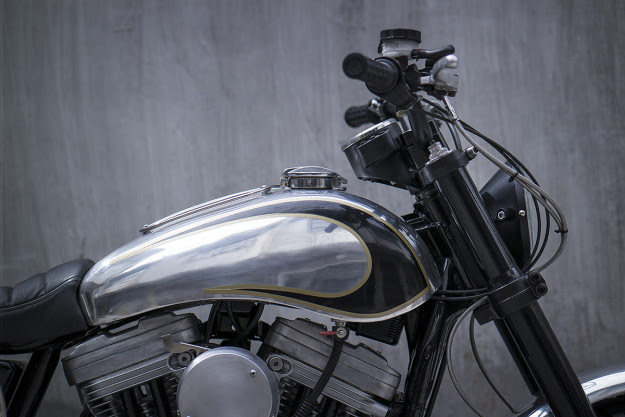
“That gave us a beautiful curve to play with when building our seat,” says Benjie. “To maintain the natural flow of the lines, we got the front of the seat to follow the tail of the tank, and then curved the seat up at the rear.” To further abandon the bike’s previous life as a cruiser, the cowhide leather seat is as narrow as you can get without exposing the frame rails.
There’s a custom oil tank slotted inside the frame midsection, with a notch to hide a gel-cell battery.

The fenders and number plate are aluminum to match the gas tank, and held in place by stainless steel mounting brackets. The front skid plate is also aluminum, with ventilation slots to help cool the voltage regulator. A small mild-steel dashboard houses the stock tachometer & warning lights.
Chrome engines do not generally look attractive on scramblers—or indeed any
motorcycle—so Benjie sandblasted the side covers and the top end to get
a pitted matte finish. Then the internals were treated to a 1200cc
piston kit and there’s a custom air filter box with stainless wire mesh
covering the inlet.

The usual Sportster belt drive was ditched in favor of a chain and Benjie’s cut out the side cover of the engine, exposing the front sprocket and gold chain.
The
only thing left to fit was an aftermarket headlight bucket and
taillight. But nothing seemed to look right, so BCR built their own.
“We
wanted to tuck the headlight bucket between the fork legs, so we
designed it to be as narrow as possible. The taillight is bare aluminum
and wraps around the frame end loop.”

The defining element of any scrambler is invariably the exhaust system. “We wanted to stay true to the signature scrambler style, but as always, we also wanted to give it our own unique twist. So we fabricated our own 2-into-2 exhaust using stainless steel and mounted the mufflers high, in the vein of old school scramblers.”

With adventure in his veins and his eyes on the horizon, there was one last detail that Benjie needed to add: an all-purpose road kit. So he designed a detachable leather bag that matches the cowhide leather of the seat. There’s even a protective aluminum plate to help keep the bag clean during the scrambler’s (hopefully) muddy future ventures.
BCR’s
‘American Scrambler’ is both functional and fun. Unlike most Harleys,
this 883 can handle a stretch of hard-packed dirt as well as ribbons of
asphalt.
And damn, doesn’t it look good?
Benjie’s Cafe Racers website | Facebook | Instagram | Images by Ben Chan

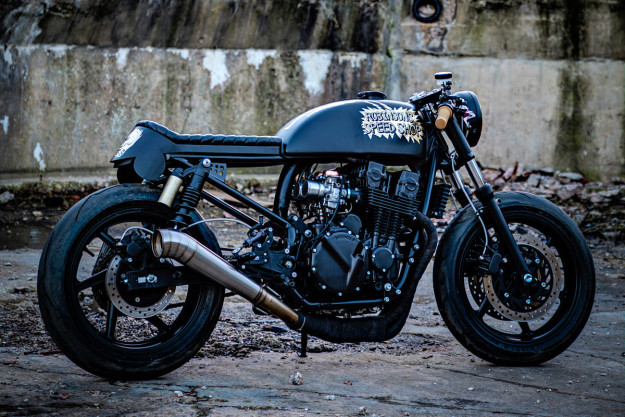
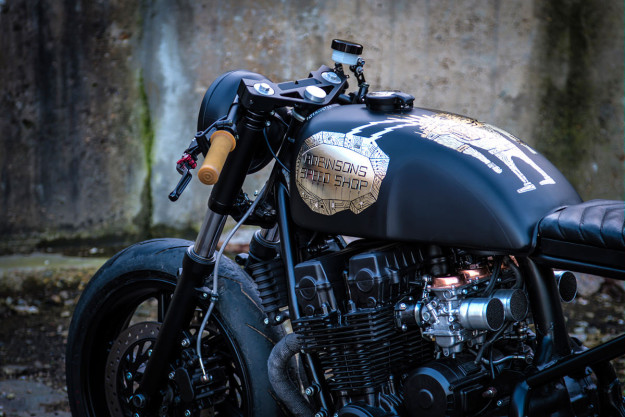
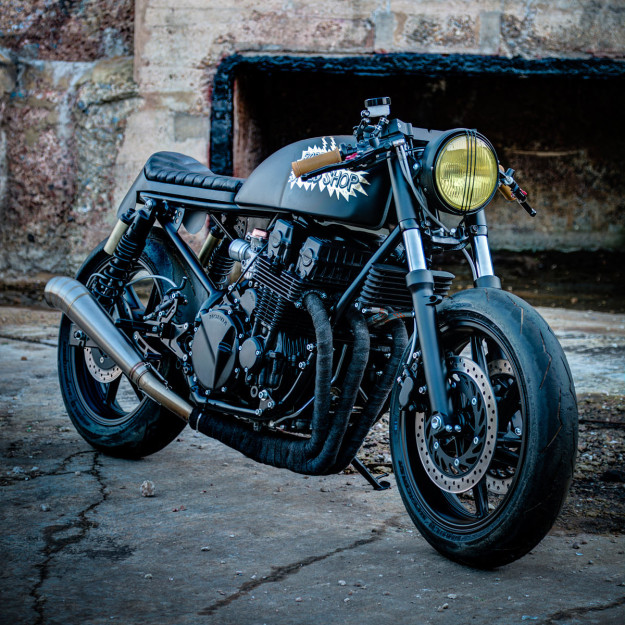
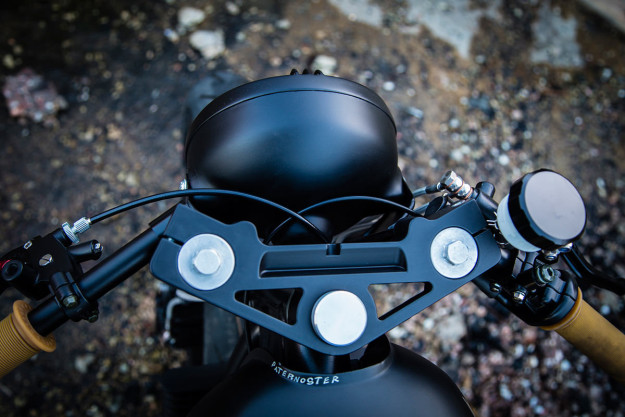

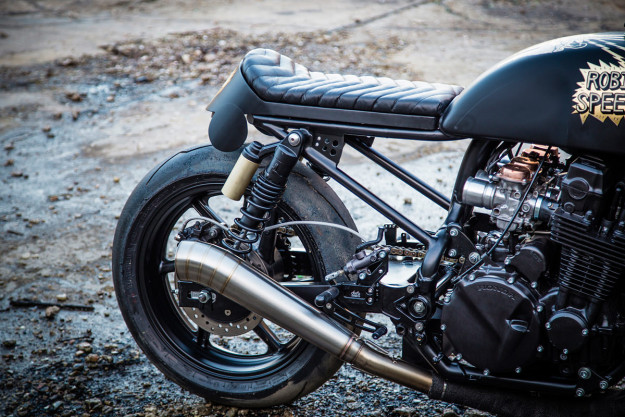
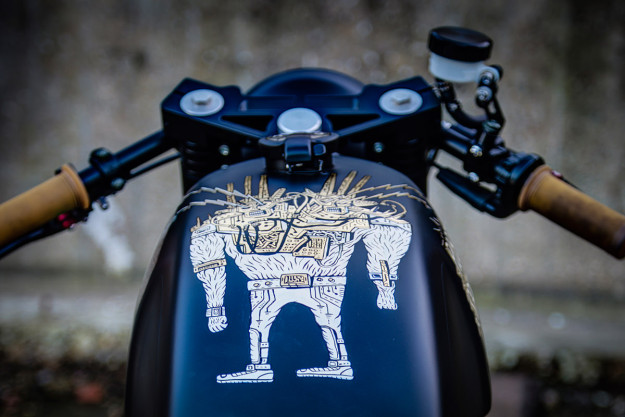
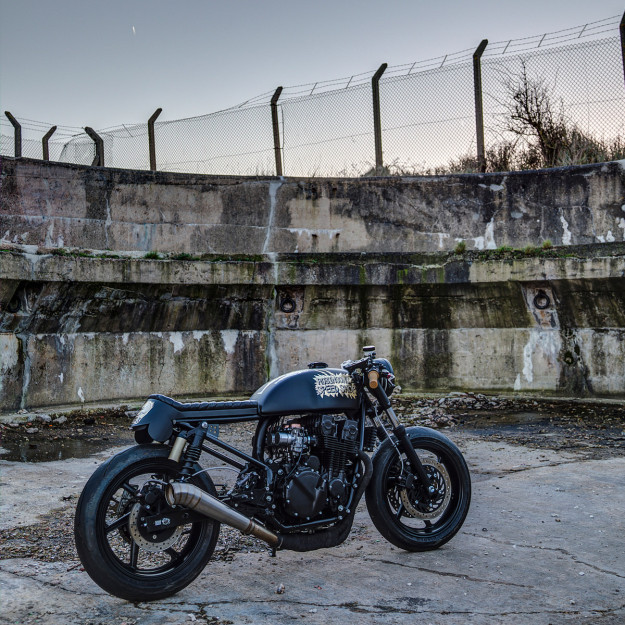
 How much power is too much power? In the motorcycle world, it’s a
question that will never be answered. But if you love customs and don’t
mind changing your underwear after every ride, Bill Webb has the
solution for you.
How much power is too much power? In the motorcycle world, it’s a
question that will never be answered. But if you love customs and don’t
mind changing your underwear after every ride, Bill Webb has the
solution for you.

